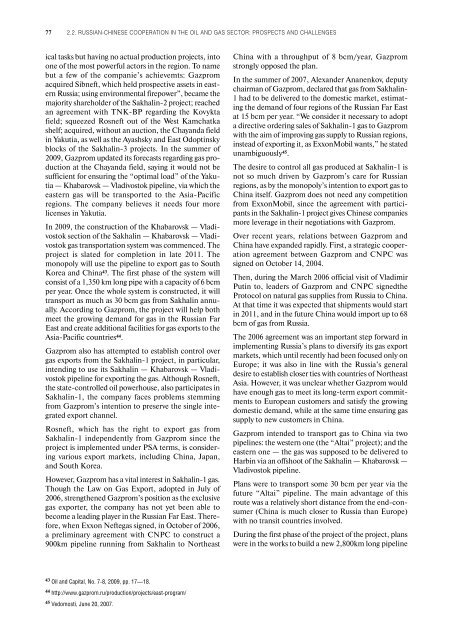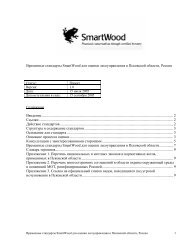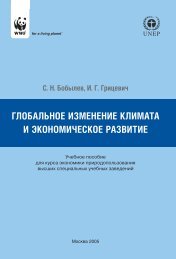to sino- russian
to sino- russian
to sino- russian
Create successful ePaper yourself
Turn your PDF publications into a flip-book with our unique Google optimized e-Paper software.
77 2.2. RUSSIAN-CHINESE COOPERATION IN THE OIL AND GAS SECTOR: PROSPECTS AND CHALLENGES<br />
ical tasks but having no actual production projects, in<strong>to</strong><br />
one of the most powerful ac<strong>to</strong>rs in the region. To name<br />
but a few of the companie’s achievemts: Gazprom<br />
acquired Sibneft, which held prospective assets in eastern<br />
Russia; using environmental firepower”, became the<br />
majority shareholder of the Sakhalin-2 project; reached<br />
an agreement with TNK-BP regarding the Kovykta<br />
field; squeezed Rosneft out of the West Kamchatka<br />
shelf; acquired, without an auction, the Chayanda field<br />
in Yakutia, as well as the Ayashsky and East Odoptinsky<br />
blocks of the Sakhalin-3 projects. In the summer of<br />
2009, Gazprom updated its forecasts regarding gas production<br />
at the Chayanda field, saying it would not be<br />
sufficient for ensuring the “optimal load” of the Yakutia<br />
— Khabarovsk — Vladivos<strong>to</strong>k pipeline, via which the<br />
eastern gas will be transported <strong>to</strong> the Asia-Pacific<br />
regions. The company believes it needs four more<br />
licenses in Yakutia.<br />
In 2009, the construction of the Khabarovsk — Vladivos<strong>to</strong>k<br />
section of the Sakhalin — Khabarovsk — Vladivos<strong>to</strong>k<br />
gas transportation system was commenced. The<br />
project is slated for completion in late 2011. The<br />
monopoly will use the pipeline <strong>to</strong> export gas <strong>to</strong> South<br />
Korea and China43 . The first phase of the system will<br />
consist of a 1,350 km long pipe with a capacity of 6 bcm<br />
per year. Once the whole system is constructed, it will<br />
transport as much as 30 bcm gas from Sakhalin annually.<br />
According <strong>to</strong> Gazprom, the project will help both<br />
meet the growing demand for gas in the Russian Far<br />
East and create additional facilities for gas exports <strong>to</strong> the<br />
Asia-Pacific countries44 .<br />
Gazprom also has attempted <strong>to</strong> establish control over<br />
gas exports from the Sakhalin-1 project, in particular,<br />
intending <strong>to</strong> use its Sakhalin — Khabarovsk — Vladivos<strong>to</strong>k<br />
pipeline for exporting the gas. Although Rosneft,<br />
the state-controlled oil powerhouse, also participates in<br />
Sakhalin-1, the company faces problems stemming<br />
from Gazprom’s intention <strong>to</strong> preserve the single integrated<br />
export channel.<br />
Rosneft, which has the right <strong>to</strong> export gas from<br />
Sakhalin-1 independently from Gazprom since the<br />
project is implemented under PSA terms, is considering<br />
various export markets, including China, Japan,<br />
and South Korea.<br />
However, Gazprom has a vital interest in Sakhalin-1 gas.<br />
Though the Law on Gas Export, adopted in July of<br />
2006, strengthened Gazprom’s position as the exclusive<br />
gas exporter, the company has not yet been able <strong>to</strong><br />
become a leading player in the Russian Far East. Therefore,<br />
when Exxon Neftegas signed, in Oc<strong>to</strong>ber of 2006,<br />
a preliminary agreement with CNPC <strong>to</strong> construct a<br />
900km pipeline running from Sakhalin <strong>to</strong> Northeast<br />
43 Oil and Capital, No. 7-8, 2009, pp. 17—18.<br />
44 http://www.gazprom.ru/production/projects/east-program/<br />
45 Vedomosti, June 20, 2007.<br />
China with a throughput of 8 bcm/year, Gazprom<br />
strongly opposed the plan.<br />
In the summer of 2007, Alexander Ananenkov, deputy<br />
chairman of Gazprom, declared that gas from Sakhalin-<br />
1 had <strong>to</strong> be delivered <strong>to</strong> the domestic market, estimating<br />
the demand of four regions of the Russian Far East<br />
at 15 bcm per year. “We consider it necessary <strong>to</strong> adopt<br />
a directive ordering sales of Sakhalin-1 gas <strong>to</strong> Gazprom<br />
with the aim of improving gas supply <strong>to</strong> Russian regions,<br />
instead of exporting it, as ExxonMobil wants,” he stated<br />
unambiguously45 .<br />
The desire <strong>to</strong> control all gas produced at Sakhalin-1 is<br />
not so much driven by Gazprom’s care for Russian<br />
regions, as by the monopoly’s intention <strong>to</strong> export gas <strong>to</strong><br />
China itself. Gazprom does not need any competition<br />
from ExxonMobil, since the agreement with participants<br />
in the Sakhalin-1 project gives Chinese companies<br />
more leverage in their negotiations with Gazprom.<br />
Over recent years, relations between Gazprom and<br />
China have expanded rapidly. First, a strategic cooperation<br />
agreement between Gazprom and CNPC was<br />
signed on Oc<strong>to</strong>ber 14, 2004.<br />
Then, during the March 2006 official visit of Vladimir<br />
Putin <strong>to</strong>, leaders of Gazprom and CNPC signedthe<br />
Pro<strong>to</strong>col on natural gas supplies from Russia <strong>to</strong> China.<br />
At that time it was expected that shipments would start<br />
in 2011, and in the future China would import up <strong>to</strong> 68<br />
bcm of gas from Russia.<br />
The 2006 agreement was an important step forward in<br />
implementing Russia’s plans <strong>to</strong> diversify its gas export<br />
markets, which until recently had been focused only on<br />
Europe; it was also in line with the Russia’s general<br />
desire <strong>to</strong> establish closer ties with countries of Northeast<br />
Asia. However, it was unclear whether Gazprom would<br />
have enough gas <strong>to</strong> meet its long-term export commitments<br />
<strong>to</strong> European cus<strong>to</strong>mers and satisfy the growing<br />
domestic demand, while at the same time ensuring gas<br />
supply <strong>to</strong> new cus<strong>to</strong>mers in China.<br />
Gazprom intended <strong>to</strong> transport gas <strong>to</strong> China via two<br />
pipelines: the western one (the “Altai” project); and the<br />
eastern one — the gas was supposed <strong>to</strong> be delivered <strong>to</strong><br />
Harbin via an offshoot of the Sakhalin — Khabarovsk —<br />
Vladivos<strong>to</strong>k pipeline.<br />
Plans were <strong>to</strong> transport some 30 bcm per year via the<br />
future “Altai” pipeline. The main advantage of this<br />
route was a relatively short distance from the end-consumer<br />
(China is much closer <strong>to</strong> Russia than Europe)<br />
with no transit countries involved.<br />
During the first phase of the project of the project, plans<br />
were in the works <strong>to</strong> build a new 2,800km long pipeline

















